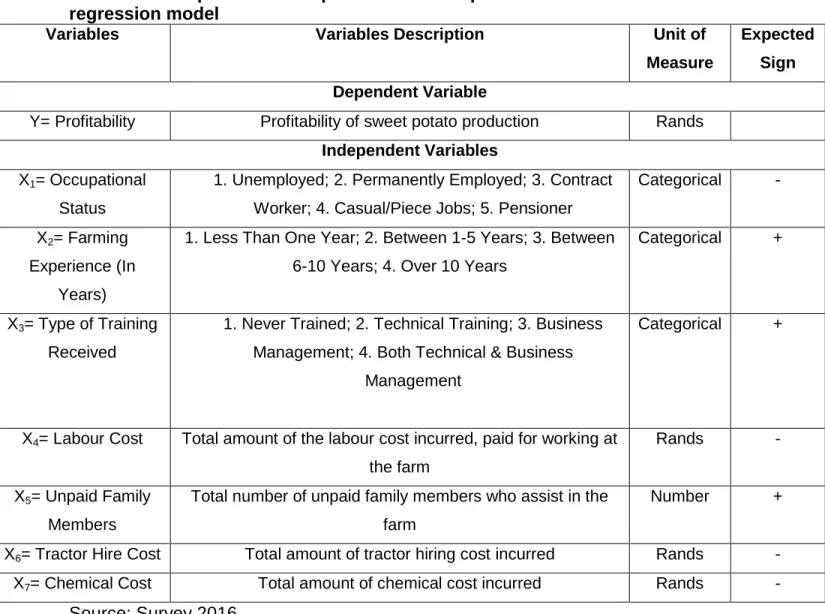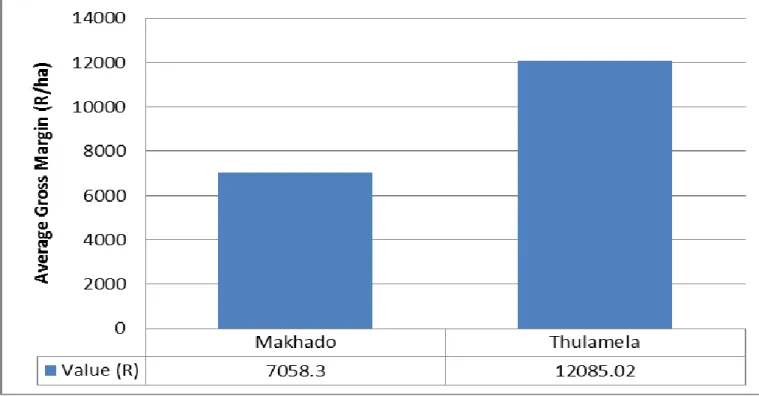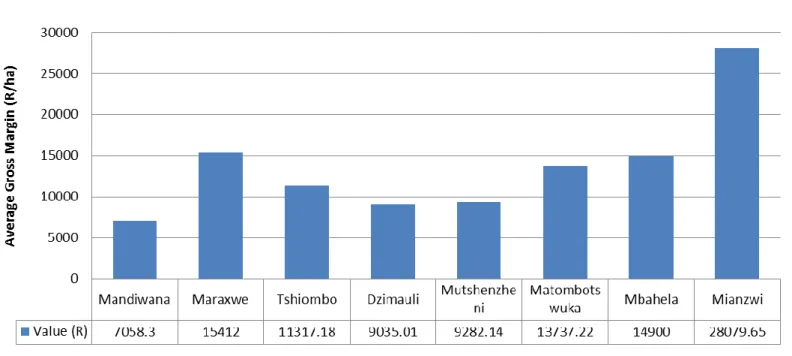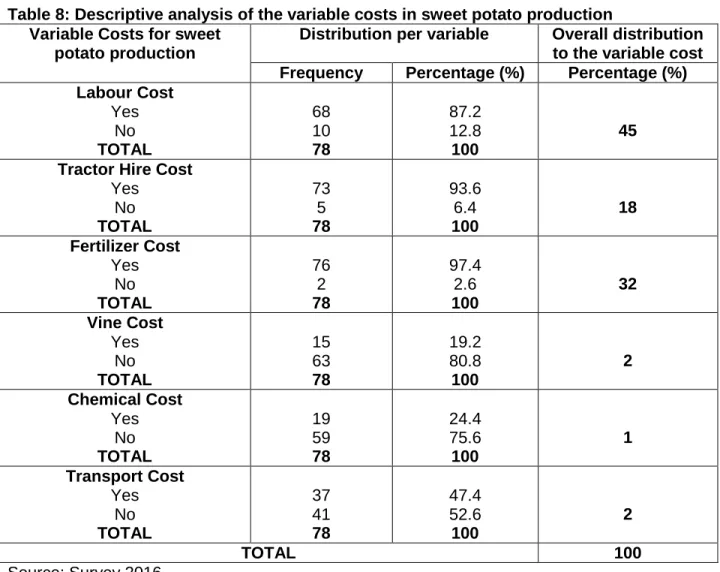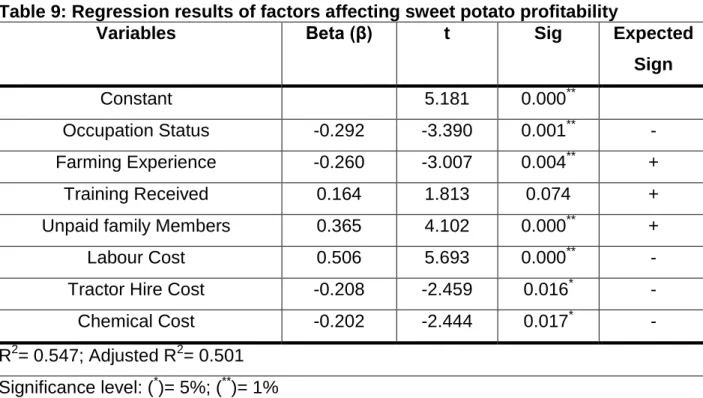The study revealed the predominance of females in sweet potato production, where 69.2% of respondents were female. The findings of the study revealed that sweet potato production is a viable and profitable enterprise in the study area.
- Background
- Problem statement
- Rationale of the study
- Objectives of the study
- Main objectives
- Specific objectives
- Research Questions
- Research hypotheses
- Limitations and delimitations
- Structure of the thesis
To determine the profitability of sweet potato enterprises located in different villages in Limpopo province. Are there differences in profitability between sweet potato companies located in the different villages.
- Introduction to literature review
- Global sweet potato production
- Sweet potato production in South Africa
- The uses and benefits of sweet potato
- Sweet potato marketing
- Costs and returns associated with agricultural production enterprises
- Socio-economic characteristics of farmers associated with marketing and
- Summary of literature review
A study by Kassali (2011) considered sweet potato production as a small-scale land-based enterprise. In South Africa, sweet potato production is dominated by commercial farmers, where they contribute 70% of the country's production.
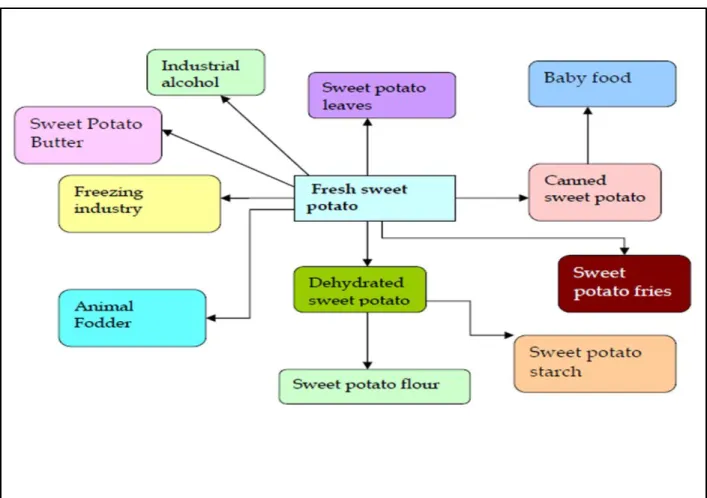
- Introduction
- Study Area
- Background of the Study Area
- Socio-economic Factors
- Agricultural Production in the Study Area
- Data Collection and Sampling
- Sampling Technique and Sample Size
- Data Collection Methods and Instruments
- Data Analysis Technique and the Model
- Ethical Considerations
- Summary of the Study Project
- Summary of the Chapter
The two local municipalities were chosen as areas of the study because they are the main sweet potato producing areas in Vhembe District. This information indicates that Vhembe district is mainly dominated by the Venda population, accounting for more than half of the total population of the district. A total of 78 farmers were interviewed as part of the study, from different villages across Makhado and Thulamela local municipalities in Vhembe district.
Primary data were collected from sweet potato producers in Makhado and Thulamela local municipalities in Vhembe district. Gross margin analysis was used to determine the profitability of sweet potato enterprises in Vhembe district. A multiple linear regression model was adopted and implemented to analyze the factors influencing the profitability of sweet potato producers in Vhembe district.
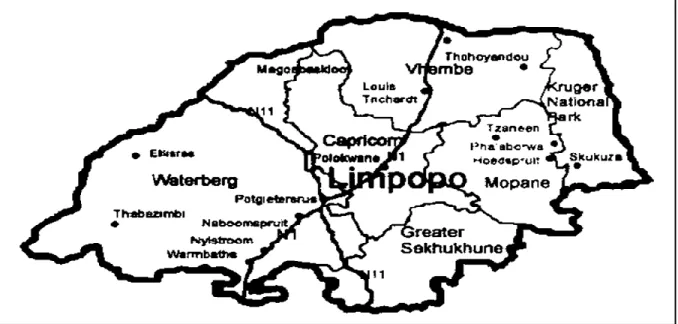
Introduction
Descriptive Statistics
This is supported by the fact that more than half of the respondents were female, with 69.2% of respondents found to be female. In the study area, 57.7% of the respondents had a household of between 1 and 5 members; respondents with a household of between 6 and 10 members were 37.2%. This is supported by the fact that more than half of the respondents were female, with 69.2% of respondents found to be female.
In the study area, 57.7% of the respondents had a household of 1 to 5 members; respondents with a household of between 6 and 10 members were 37.2%. For example, 91% of the respondents in the area have been working in the agricultural sector for more than 5 years. In addition, social benefits and employment are the main source of income for 38.5% and 12.8% of respondents respectively.

Sweet Potato Market Channels and Options
44 The farmers rent trucks to transport their products to the respective areas where they want to sell their products. The transport is paid for that particular trip or day the farmer decides to go to market, and prices vary depending on who you find and how you negotiate with the transport owner. This market option can be both rewarding and risky for farmers compared to the farm gate option.
Although the farmer has a set price, customers can negotiate a price that suits them and take advantage of the farmers. Farmers in the study area revealed several reasons that led them not to pursue the formal markets and other markets that might be more rewarding for them. The respondents' lack of information was one of the challenges they face, in which they do not have information about available markets, rating and quality requirements in the markets, contracts and policies in various available markets.
Model Results
- Gross Margin Analysis
- Multiple Regression Analysis
An average gross margin was calculated to measure the profitability of the sweet potato businesses in the Vhembe district. Furthermore, the working capital ratio for the sweet potato farmers in the study area was calculated. In the study area, 62.8% of the respondents had a positive gross margin less than the average gross margin.
In addition, the records of growers in the villages of Dzimauli, Mandiwana, Mutshenzheni and Tshiombo were lower than the overall average gross margin of sweet potato production in the study area. Table 8 shows a number of factors that influenced the sweet potato growers in the study area, namely the variable costs. This indicates that 50.1% of the variation in sweet potato profitability is explained by the independent variables.
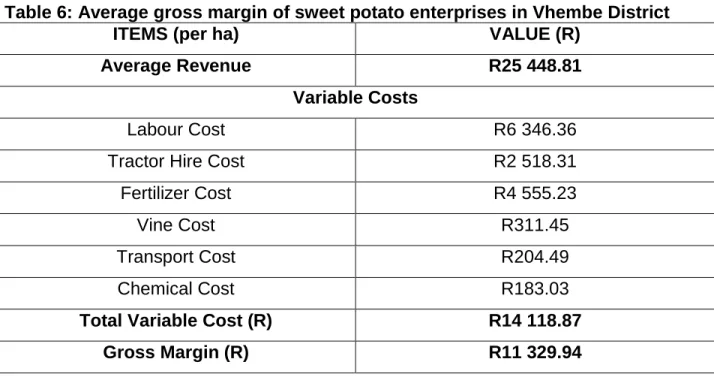
Challenges faced by sweet potato farmers in the study area
The district is one of the poorest in the country and farmers are resource poor, lack of mechanization and infrastructure also affects agricultural production in the district. There are other challenges faced by farmers in the district which affect their production such as cases of cattle theft, lack of clear land status or land tenure system, lack of marketing of their produce and unsatisfactory extension services in some areas. Due to lack of security in the farms such as fences, farmers encounter theft from villagers and invasion of their farms by animals.
Despite all the challenges faced by the farmers in the district, there is some existing development and potential in the district to help and improve agricultural production. There is also a need for agricultural processing facilities, as the district has great potential in agricultural production. This will help farmers to have various options in terms of their output market and to increase their production.
Discussion of results
The results of the study show that the cultivation of sweet potatoes in the study area is profitable. This result on the profitability of sweet potato production is consistent with the findings of Kassali (2011), Chauke et al. Due to the lack of resources of farmers in the study area, sweet potato cultivation requires a lot of manual work.
This result implies that a unit increase in labor cost would increase the profitability of sweet potato by 50.6% with all other factors held constant. The study revealed that sweet potato farmers in the study area have other occupations outside of agriculture. The result shows that a unit increase in the experience of sweet potato farmers decreases profitability by 20.6% with all other factors held constant.
Summary of the chapter
This result regarding chemical cost is similar to the findings of Adewumi and Adebayo (2008) and Kassali (2011) who revealed the low level of chemical consumption by sweet potato producers as a result of their high cost and farmers' reluctance to invest. in chemicals. Also, consistent with prior expectations, chemical costs had a negative sign but statistically significant for profitability at the 5% level. This result indicates that a unit increase in chemical cost will lead to a 20.2% decrease in profitability with all other factors held constant.
62 revealed that there were variables found to be statistically significant for sweet potato profitability, which were: Occupational status, farming experience, unpaid family labour, labor cost, tractor rental cost and chemical cost. However, occupational status, farming experience, unpaid family members and labor costs were statistically significant for profitability at the 1% level of significance; while tractor cost rental and chemical cost were statistically significant at the 5% level of significance. Furthermore, of the variable costs, labor costs and unpaid family members had a positive relationship with profitability, while occupational status, farming experience, tractor rental costs and chemical costs had a negative relationship with profitability.
Introduction
Hypotheses Testing
The findings of the study showed that farmers in the area only had an informal market where they sold their produce at the farm gate. Therefore, farmers only had an informal market route as an option to sell their produce.
Summary
65 The socio-economic characteristics of the farmers showed that 69.2% of the farmers were women, with 50% of the farmers being older than 60 years. None of the respondents were involved in a formal market, which they attributed to the lack of information and support. In addition, the working capital ratio was 0.55, which means that 55% of the gross income covers the costs incurred, while the remaining 45% can be reinvested on the farm or for household use.
Labor cost, fertilizer cost and tractor rental cost were the highest cost incurred by farmers; contributing 45%, 32% and 18% of variable cost respectively. Furthermore, 2.6% of the respondents recorded a negative gross margin, while 97.4% had a positive gross margin and thus achieved a profit. Farmers in Thulamela Local Municipality performed well in the market compared to farmers in Makhado Local Municipality.
Conclusion
The significant variables are: occupational status, farming experience, unpaid family members, labor costs, tractor rental costs, and chemical costs. In addition, occupational status and farming experience were negatively signed and statistically significant at the 1% significance level, while tractor rental and chemical costs were also negatively signed but statistically significant for profitability at the 5% significance level. In addition, unpaid family members and labor costs had a positive sign and were statistically significant for profitability at the 1% significance level.
67 discovered that there are differences in profitability between sweet potato farms in different villages of the study area. There were several factors that required attention, which also formed a bottleneck for the sweet potato growers in the Vhembe district. Lack of proper aid and support programs due to natural causes such as drought, hail and floods.
Recommendations
68 public works; and others in the public and private sector must provide the community with water for domestic use, as well as repair damaged agricultural irrigation systems in the study area. Therefore, the study recommends reviewing the extension services offered in the study area. The stakeholder involved in agriculture, such as the ministry of agriculture; rural development department; national fresh produce markets; retailers; and others in the public and private sectors must provide for farmers.
Farmers in the study area also cited challenges of lack of infrastructure such as better road networks and storage facilities, as well as stock theft. Therefore, the study recommends that stakeholders within the agriculture sector and the community such as the Department of Agriculture; department of rural development; public works department; Therefore, the recommendations of this study should be implemented to improve the status of farmers and ranchers in the study area.
Areas of further study
2008) 'Profitability and technical efficiency of sweet potato production in Nigeria', Journal of rural development, Volume. A Case Study of Smallholder Farmers in the Capricon District of South Africa', African Journal of Agricultural Research, Vol. 2014) 'An assessment of factors affecting income generation from crop production under irrigation in the Limpopo province of South Africa', Journal of human ecology, Volume. http://commons.wikimedia.org/wiki/File:Map_of_South_Africa_with_provinces_shaded.
A case study in the Waterberg District, Limpopo Province, South Africa', Journal of Agricultural Science, Volume. 2008) 'Promotion of Sweet Potatoes for the Food Industry in Nigeria', Bulgarian Journal of Agricultural Science, Vol. 2013) 'A review on sweet potato post-harvest processing and preservation technology', African Journal of Agricultural Research, Volume.
